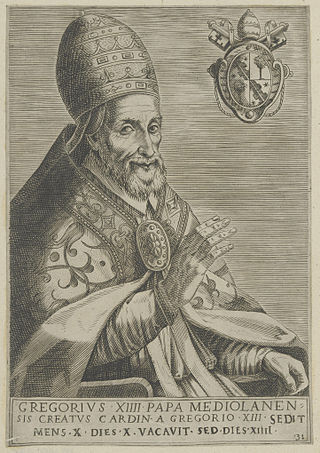
Pope Gregory XIV, born Niccolò Sfondrato or Sfondrati, was head of the Catholic Church and ruler of the Papal States from 5 December 1590 to his death, in October 1591.

Cesare Baronio was an Italian cardinal and historian of the Catholic Church. His best-known works are his Annales Ecclesiastici, which appeared in 12 folio volumes (1588–1607). Pope Benedict XIV conferred upon him the title of Venerable.

Charles Borromeo was the Archbishop of Milan from 1564 to 1584 and a cardinal of the Catholic Church. He was a leading figure of the Counter-Reformation combat against the Protestant Reformation together with Ignatius of Loyola and Philip Neri. In that role he was responsible for significant reforms in the Catholic Church, including the founding of seminaries for the education of priests. He is honoured as a saint by the Catholic Church, with a feast day on 4 November.
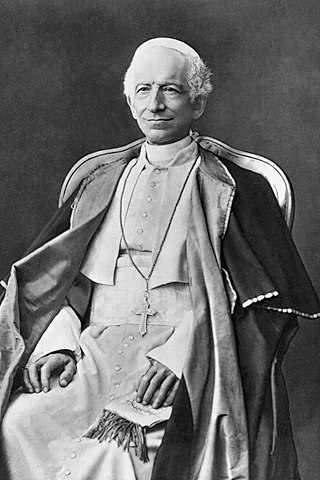
The papal conclave held from 18 to 20 February 1878 saw the election of Vincenzo Pecci, who took the name Leo XIII as pope. Held after the death of Pius IX, who had had the longest pontificate since Saint Peter, it was the first election of a pope who would not rule the Papal States. It was the first to meet in the Apostolic Palace in the Vatican because the venue used earlier in the 19th century, the Quirinal Palace, was now the palace of the king of Italy, Umberto I.

The Archdiocese of Milan is a Latin Church ecclesiastical territory or archdiocese of the Catholic Church in Italy which covers the areas of Milan, Monza, Lecco and Varese. It has long maintained its own Latin liturgical rite usage, the Ambrosian rite, which is still used in the greater part of the diocesan territory. Among its past archbishops, the better known are Ambrose, Charles Borromeo, Pope Pius XI and Pope Paul VI.

Federico Borromeo was an Italian cardinal and Archbishop of Milan, a prominent figure of Counter-Reformation Italy.
A doctor of both laws, from the Latin doctor utriusque juris, or juris utriusque doctor, or doctor juris utriusque is a scholar who has acquired a doctorate in both civil and church law. The degree was common among Roman Catholic and German scholars of the Middle Ages and early modern times. Today the degree is awarded by the Pontifical Lateran University after a period of six years of study, by the University of Würzburg, and by the University of Fribourg, as well as the University of Cologne.

The aristocratic House of Borromeo were merchants in San Miniato around 1300 and became bankers in Milan after 1370. Vitaliano de' Vitaliani, who acquired the name of Borromeo from his uncle Giovanni, became the count of Arona in 1445. His descendants played important roles in the politics of the Duchy of Milan and as cardinals in the Catholic Reformation. In 1916, the head of the family was granted the title Prince of Angera by the King of Italy.
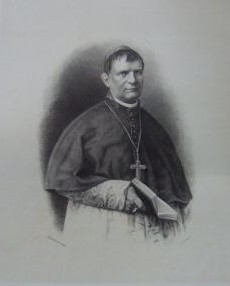
Sisto Riario Sforza was an Italian Roman Catholic cardinal who served as the Archbishop of Naples from 1845 until his death. Sforza's rapid rise through the Church ranks began with various appointments before he served as the Bishop of Aversa for seven months. He was promoted to the Naples archdiocese and cardinalate. After two months, Sisto became a close supporter of Pope Pius IX and a vocal participant in the First Vatican Council.

Santi Vito e Modesto is a Roman Catholic church, and appears to have two facades, a 20th-century marble facade on Via Carlo Alberto, but a rustic brick older entrance, in reality the apse, on the Via San Vito in the Rione Esquilino of Rome, Italy. It has also been called Santi Vito, Modesto e Crescenzia. It is located, adjacent to the Servian Wall, near the former Monastery of the Viperesche.

Benedetto Barberini was a Catholic Cardinal and Camerlengo of the Sacred College of Cardinals.
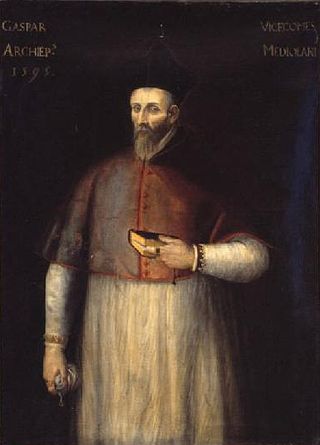
Gaspare Visconti was the Archbishop of Milan from 1584 to 1595.

Francesco Gonzaga was an Italian nobleman, who was Duke of Ariano. He was also a Roman Catholic cardinal and bishop.
Scipione Lancelotti (1527–1598) was an Italian who became a cardinal within the Roman Catholic Church.

Edoardo Menichelli is an Italian prelate of the Roman Catholic Church. He served as Archbishop of the Archdiocese of Ancona-Osimo from 2004 to 2017. Pope Francis made him a cardinal on 14 February 2015.
Giambattista Leni (1573–1627) was a Roman Catholic cardinal.on consistory of November 24, 1608 was created cardinal by Pope Paul V
Ottavio Paravicini (1552–1611) was a Roman Catholic cardinal.
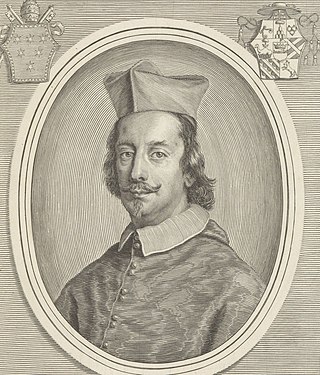
Federico Borromeo, iuniore was a Roman Catholic cardinal.
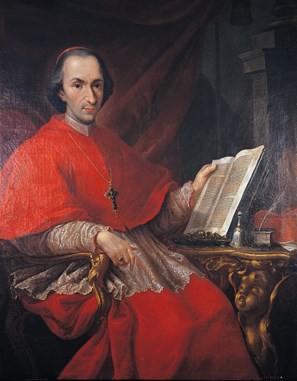
Vitaliano Borromeo was a Roman Catholic archbishop and cardinal.

The Pontifical Lombard Seminary of Saints Ambrose and Charles in Urbe is an ecclesiastical institution that serves as a residence for and trains diocesan priests who have been sent to Rome by their bishop to pursue an advanced degree or follow a specialized course of study at one of the pontifical universities there.
















